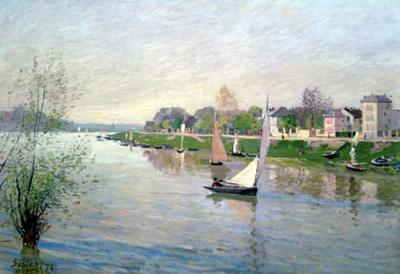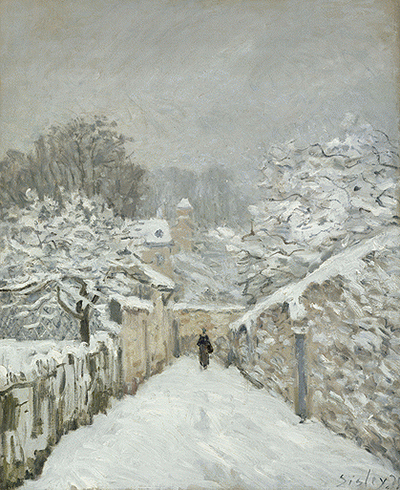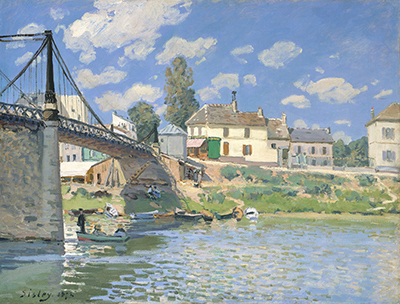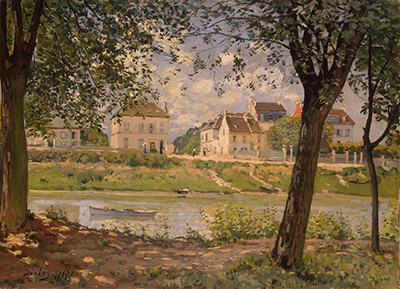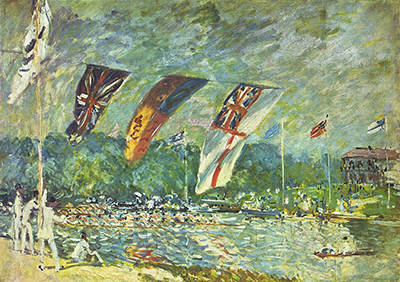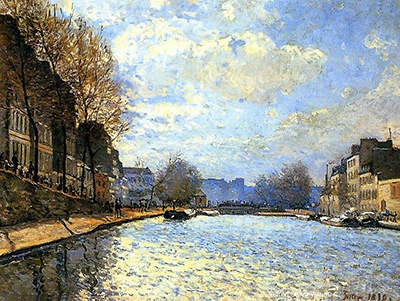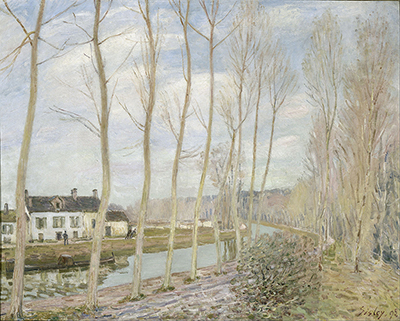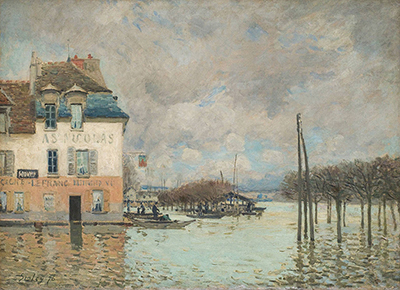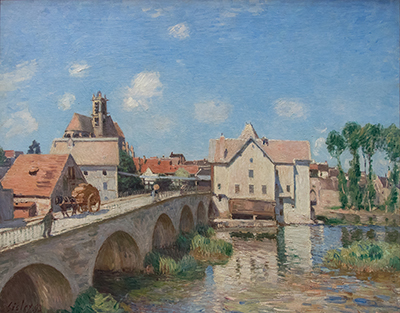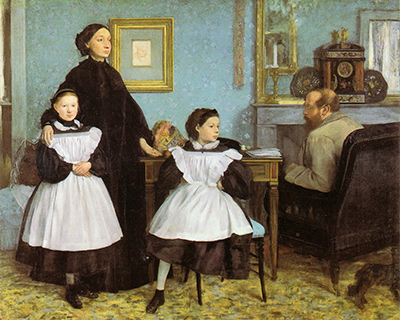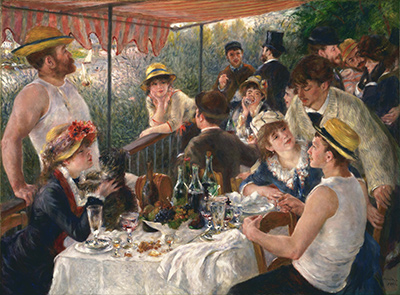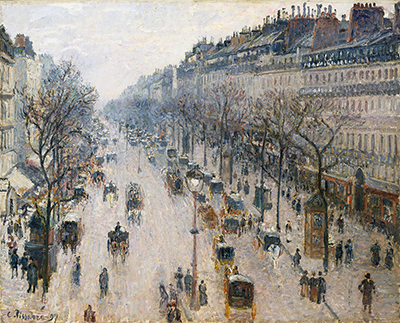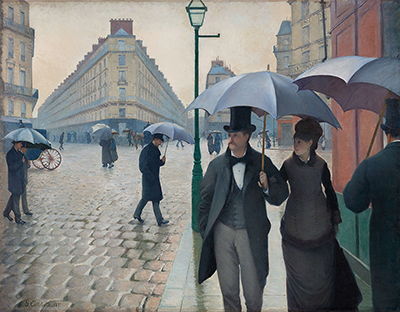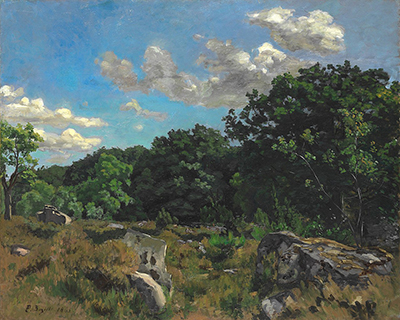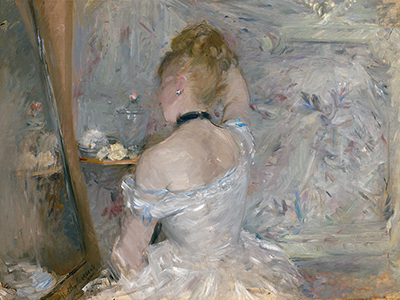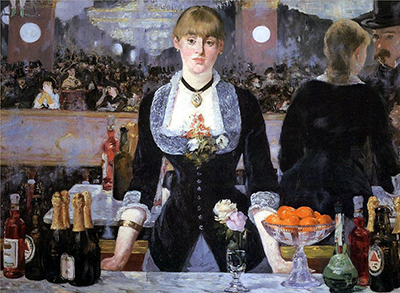The Seine at Argenteuil, executed in 1872, is an oil-on-canvas painting by Alfred Sisley that depicts a river passing through a French town. Small boats, with single masts and fore-and-aft rigs, can be seen passing along the river or berthed along its banks.
Sisley, a British national who spent most of his life in France, lost the financial support of his father after the family business failed during the Franco-Prussian War of 1870-1871 and resolved to make a living by selling his artworks. The landscape painting, measuring fifty centimeters by seventy-three centimeters, is part of a private art collection.
Sisley, in the year following France’s catastrophic defeat at the hands of the Prussian-led coalition of German states, executed a number of paintings of both Argenteuil and of the River Seine. Argenteuil, situated on the outskirts of Paris and sprawled along the tree-lined banks of France’s most important river, retained its rural characteristics at the time in which Sisley executed his painting and was a popular location for urbanites who desired a change of scenery or atmosphere. Other paintings of Argenteuil and the Scene that were created in 1872 by Sisley include Ferry to the Ile-de-la-Loge, Footbridge at Argenteuil and Square at Argenteuil.
The Seine, while navigable at Argenteuil, receives less commercial traffic along its upper reaches than it does along the lower stretch that flows out into the English Channel and this lack of mercantile activity frees the river up for tourists. The presence of smaller craft, both sailing and rowing vessels, in the painting suggests that pleasure boats were a more common sight on this section of the waterway than the trading barges that transported goods along the river’s lower reaches. Parisians, eager to escape the pressures of the city, might spend an afternoon rowing or sailing on the waters of the Seine and soak in the tranquil surroundings of this rural retreat.
A young tree, situated at the bottom left-hand corner of the canvas, protrudes from the water and this indicates that the riverbank is nearby. Trees and shrubs sometimes take root besides waterways or in the margins of rivers and Sisley, who adhered to the Impressionist practice of painting outdoors or en plein air, may have been sitting on the riverbank when he executed the artwork or perched inside a boat that was floating near dry land. The viewpoint of the painting, therefore, is from one riverbank looking towards the other.
More Impressionist Artists



